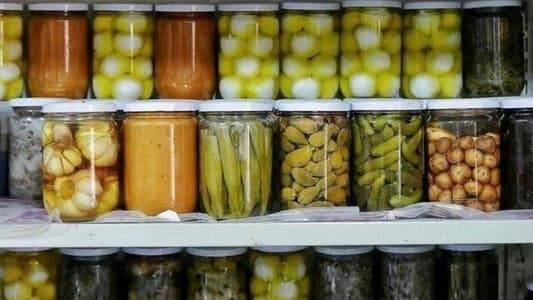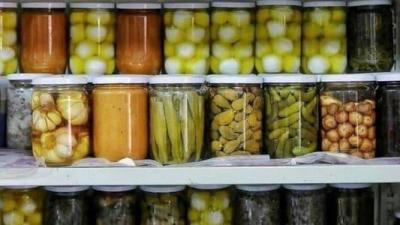For many years, people in the Bekaa valley have celebrated their winter preserves and the various quantities they prepare, which have become a treasured asset in their homes, helping them face the difficult living conditions during the winter when priorities and expenses crowd their lives. Preparing homemade preserves in anticipation of winter, when villages and towns become isolated due to frost and snow, causing most vegetables and fruits to disappear, is a tradition closely associated with the people of the Bekaa. This annual ritual is preserved by women, much like their counterparts in the south and north of Lebanon, with each region having its unique varieties of preserves. Some of these preserves have distinctive characteristics and flavors crafted by hands striving to secure a livelihood and meet the needs of winter amidst rising costs and added demands for heating, school fees, and other expenses.
For continuous days, with unwavering activity, women in the Bekaa begin preparing winter preserves as if they are in a race against time before the season ends. The story is long, and the preparations and quantities vary based on the number of family members. As agricultural seasons mature, the pace of preserving accelerates, with women working on multiple fronts.
The process begins with "kashk," a staple of the region which starts being prepared in May. It requires milk, bulgur, and continuous effort day and night for a week until it matures, after which it is taken to the mill and then sun-dried for two days before being stored in designated clay jars. From there, women move on to pickling various vegetables, making tomato paste, and preparing dried herbs, which become main dishes during the winter, in addition to different jams from figs, apricots, and any fruit they can utilize for jam-making.
As September begins, the season for "makdous" — made from eggplant, walnuts, and peppers — arrives. After various boiling and preparation processes, it is packed with oil. The glass jars are then arranged alongside their counterparts on designated shelves. Among all these varieties, "qawarma" leads the collection as it is relatively expensive, made from lamb meat, and cooked in a special way with specific quantities of salt. It is commonly used in many dishes, especially in rural and mountainous areas where residents struggle to purchase fresh meat daily.
However, with rising prices and the cost of raw materials used in preserves, many families have reduced their preparations this year. Some families have even limited their choices to essential items such as grains, kashk, and makdous.
Mrs. Su'ad explained to "Nidaa al-Watan" that she has been preparing winter preserves for many years, having learned the preparation methods from her mother, whom she taught her daughters. Every year, she undertakes this task to ensure adequate winter meals, preparing about 20 kilos of kashk for her family of five, which lasts them the entire year, among other necessities. However, this year has been particularly tough on her, as the amount of kashk has been cut in half, and similarly for makdous, where she reduced her purchase from 50 kilos to just 15 kilos due to rising prices of walnuts and oil. As for qawarma, it was omitted from her list entirely, as this year’s inflation has necessitated severe rationing of both quantities and types.
While some families have scaled back their usual quantities, others have been deprived of winter preserves altogether, as they can’t afford the required amounts. They understand that these preserves help them face winter hunger, but with the lack of money, they accept the saying: "The eye sees but the hand is short."




